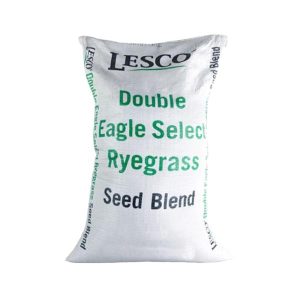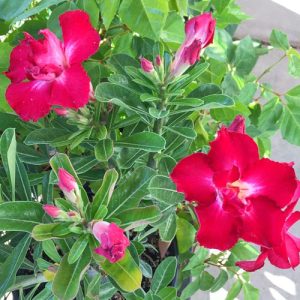Stunning Blooms Sure to Steal Your Heart
Large Pink Blooms – Superior to Other Flowering Dogwoods
The Rosy Teacups® Dogwood is a floriferous, remarkably strong bloomer that will fill you with pride when it’s in bloom.
Planted alongside a driveway – or as a featured specimen in the middle of your lawn, this tree will enrich your landscape with vibrant color like no other. Its rosy-pink blooms emerge in late spring, flush and hold for 3 weeks or more with an unmatched show of free blooming wonder. As the most prolific bloomer of all dogwoods, they present the largest bloom of the species, emerging from bracts measuring as wide as 3 inches across!
The Brightest Pink of the Year
Known for its compact, dense heads of floral bracts, Rosy Teacups®superior blooms range from a dark pink through to a red rose color with a burnt magenta along their margins. Not only are they larger than typical dogwood flowers, there are quite simply, many more of them than on other Dogwoods. To add to the visual splendor, the blooms overlap each other, creating a dramatic display varying pink hues.
This Dogwood grows close to the ground featuring thick, oval shaped leaves around 4” in length. During the season, their glossy green shade creates a dense backdrop that enhances the vibrance of the pink blooms.
You’ll Have Big Pink Blooms the First Summer
You don’t have to wait years for this tree to start blooming. Your tree will come alive with bursts of flowers the very first year. The blooms start off as a creamy white color, quickly changing to bright white and then finally the showy pink color begins to emerge. While it’s characteristically slow growing, the majestic appeal makes up for its lack of speed. It will eventually reach heights up to 20’-25’ over a 15-year period, and you can expect this tree to thrive summer after summer for a lifetime.
Everlasting Beauty – Even Through Autumn
The Rosy Teacups®Dogwood’s strongly held leaves transition from their glossy green of summer to a striking red foliage in the autumn months. When you’re looking for another burst of color for your landscape, the burgundy-colored leaves make a strong impact in any setting.
Proof that it is Trouble-Free Tree
15 years of research and testing have shown this hybrid to have no disease or insect problems. Provide it with a well-drained, somewhat acidic soil environment, with some mulch to keep its roots cool and it will continue growing trouble free! Hardy to Zone 6 and above, it’s tolerant to humidity, heat, pests, and moisture. Plant in full sun or partial shade for best results.
Planting & Care
Seasonal, Location, and Exposure Considerations:
Rosy Teacups Dogwood is hardy in USDA zones 5 to 8. Tolerant to partial shade but prefers full sun, the Kousa strain of this tree can tolerate temperatures as low as –14°F. With a potential to grow 10’ tall, be sure to give it enough room when planning the site. During the first winter, protect from wind borne salt spray as it will effect winter survival. You should plan to provide regular moisture during hot, dry summers.
Soil Preferences
Rosy Teacups prefer to be grown in a well-drained, acidic soil; but they are more forgiving than some acid lovers and can persist in compacted, slightly alkaline, and even dry soils. However, they will thrive and do best in a soil with plenty of humus and organic matter; of medium moisture; and well drained…a sandy loam is a good all-around texture to aim for.
Planting and Care – Container Grown or in Pots
When growing in containers, plan ahead, choosing a deep pot with a slightly larger width than the container the plant comes in. The container should have several drainage holes in the bottom to ensure drainage; and an inch or two of clean stone in the bottom of the pot to further ensure water movement is a good idea. The goal is to keep excess moisture away from the roots as they grow.
Choose a potting soil designed for bonsai, or one that is well drained, has good organic content, and is slightly acidic. If blending your own potting mix, use a nutrient rich soil mixed well with mature compost to create a nutrient rich soil that drains well and approaches ‘loam’ in general texture.
Fill the bottom of the pot with a layer of soil, position the dogwood tree in the center of the pot, and examine where the top of the root ball ends up. It should be level with the eventual soil line, which wants to be slightly below the lip of the container to keep water from spilling over the sides when watering. Once at the height, depth, and position you are looking for, backfill the container about half way and water thoroughly to remove air pockets. Finish backfilling, repeat watering, and let the soil settle before once again watering until you can see water leaving the bottom of the pot through the drainage holes.
Choose a location for your potted dogwood in a warm, sunny location providing about 8 hours of partial shade to full sun. Maintain a generally moist soil environment for your establishing dogwood. You should allow the soil to dry out slightly between waterings as a continuously wet soil environment is not good. Just don’t let it dry out completely. Water evenly, preferably with a water can or slow coarse spray. Check the soil moisture by touch before watering and make sure the surface 2-3” have dried out somewhat before adding more. Water until you see it coming out of the bottom of the pot.
You can feed your Rosy Teacups Dogwood with a balanced, slow release fertilizer at about half strength, with about 90 days between feedings during the growing season. Always spread the fertilizer evenly across the soil surface and do not over fertilize.
You will want to prune your container grown tree only when it is dormant. Always use sharp tools and use good hygiene. Remove all dead growth and stems as they appear. You should thin the interior branches so as to open the plant up, ensuring better air circulation and facilitate the plant to capture the sunlight.
Planting and Care – Outdoor Growing in the Garden
Springtime is the best season to plant flowering dogwoods. This allows them to become established before growth commences, when the air is somewhat cooler and the soil media is uniformly moist. Kousa dogwood is particularly sensitive to fall planting. If you must plant in the autumn, pay closer attention to soil texture, watering guidelines, and try to do it early enough to enable root establishment to begin. Mulch will also aid in protecting the young roots from winter damage.
The planting hole should be at least 3 times the diameter of the container and root ball the plant arrived in. Dig your hole, blend your organic amendment with the extracted soil off to the side, and make sure there is no compacted soil in the bottom of the planting hole. If this is a concern, dig the hole deeper and backfill to desired depth using your blend. Allow for the appropriate depth so that the top of the root flare, where the roots end and the trunk begins, should set about an inch above the garden’s soil level. Gently separate the roots with your fingers and position them downward in the hole. Never plant the tree deeper than the soil level around it. Follow guidelines as above… backfill about half way, water well, allow for settling, then finish filling. Water thoroughly after planting.
When planting is complete and the soil has been well watered, apply a layer of mulch over the top. If you’ve planned ahead to provide a good source of organic nutrients, fertilizer is not needed and should be avoided but in very small amounts to avoid burning the roots. Use mulch to keep the roots cool in the hot, dry summer months.
Watering
The Rosy Teacups Kousa Dogwood tree, once established, has a relatively low requirement for watering. Be conscious of water balance while establishing, and if you are prone to or experience a long dry spell in the hot summer months, water as needed. While tolerant to reduced soil water balance, a hot dry spell will cause the leaves to scorch if they cannot be hydrated by the roots.
Fertilizing
Dogwoods prefer slow release, organic forms of nutrients. Decomposing mulch, well matured compost, and slow release materials are advised over the use of synthetic fertilizers. Promote root growth in their initial season by not using fertilizer sources high in available nitrogen like fresh manures.
Weed, Insects, and Diseases
Rosy Teacups Dogwoods are relatively hardy, and don’t have significant disease or insect pest problems generally. Most of the occurrences of disease relate to improper soil moisture balance. It’s still a good idea to monitor for the occasional insect problem, for which most can be controlled with non-toxic materials. If removing diseased portions of the plant, dispose of them by removing completely offsite or burning.
Pruning and Training
You can prune your Rosy Teacups but do so only during dormancy, other than ongoing removal of dead shoots and branches. Remember that the buds you see in the fall are those which will bloom the following year. Avoid pruning for the first year or two. A well-established dogwood only needs pruning ever 5-10 years. In container grown situations, wait until the plant is happily growing, perhaps after the second year, and shape/prune according to your spatial considerations.
Pruning the center of the plant to encourage air flow and sun exposure is also advised.









